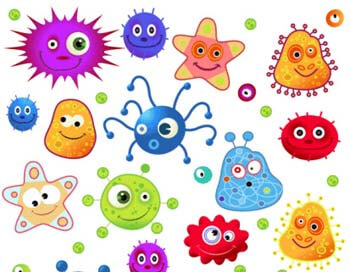The vagina, as well as the oral cavity, skin, intestines and other parts of the human body, is inhabited by numerous microorganisms. However, their presence is not a disadvantageous and passive colonization. Bacteria that live inside us make up the so-called «ecosystem», which builds a unique system of protection against other potentially pathogenic microorganisms.
The vaginal flora of a healthy woman consists mainly of lactic acid bacteria (Doderlein bacillus). Эти бактерии регулируют рост остальной флоры и препятствуют заселению влагалища враждебными микробами. These bacteria regulate the growth of the rest of the flora and prevent the colonization of the vagina by hostile microbes. Doderlein bacillus are able to synthesize hydrogen peroxide and lactic acid, acidify the vaginal environment and metabolize glycogen.
НThese wonderful aforementioned bacteria were named after their discoverer, Albert Doderlein, a German obstetrician who, in 1892, identified and described their characteristics.
Under normal conditions, during childbearing age, Doderlein lactobacilli account for approximately 90% of the total volume of vaginal microorganisms. Estrogen hormone levels have a significant effect on the growth of these microorganisms. When its concentration decreases, this leads to a decrease in glycogen and restrict the distribution of lactobacilli.
Vaginal colonization with Doderlein bacillus occurs at the birth of a girl, while passing through the birth canal. And placental estrogen promotes the rapid reproduction of lactobacilli, due to the high glycogen content in the vaginal mucosa.
Enemies of Doderlein
Enemies of Doderlein bacillus The list of enemies of Doderlein bacillus, in addition to a chronic shortage of estrogens, includes:
- spermicides, as contraceptives ; (for example, nonoxynol-9);
- unprotected sex (semen due to a slightly alkaline environment reduces the acidity of the vagina, which is in favor of engraftment and reproduction of pathogenic microorganisms); ;
- oral contraceptives;
- synthetic and tight underwear;
- excessive hygiene;
- antibiotic treatment.
. It should be noted that the restoration of the vaginal microflora after prolonged antibiotic therapy is as important as the restoration of the intestinal flora, especially in women susceptible to bacterial vaginitis.
In addition to Doderlein bacillus, the bacterial flora is less represented by other microorganisms such as streptococci, enterobacteria, anaerobic bacteria, gardnerella, yeast, and mycoplasmas. Some of them, being potentially pathogenic, are not able to fulfill their harmful mission precisely because the Doderlein bacillus do not allow them to multiply rapidly. When, on the background of taking antibiotics, antidepressants, a severe physical or psychoemotional state, a “revolution” occurs and an excessive growth of “bad” microbes occurs, then we are dealing with bacterial vaginosis. An unpleasant vaginal odor and grayish-white discharge appear.
The rules of feminine hygiene
To maintain a healthy balance of the vaginal flora it is important:
- to clean properly the intimate areas. . Use soap with physiological pH values (4-5);
- do not wear synthetic underwear;
- do not wear tight and tight-fitting trousers, because, while retaining moisture and heat, they create favorable conditions for the development of pathogenic flora;
- do not use shared towels;
Follow a healthy and balanced diet (in particular, reduce your intake of sweets and simple sugars). Do some exercises. And these little signs of attention to yourself will certainly be rewarded with a healthy vaginal flora and effective immune defense.
















